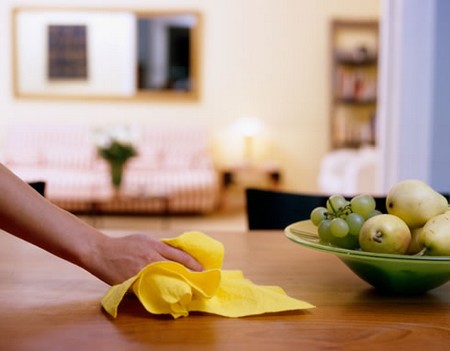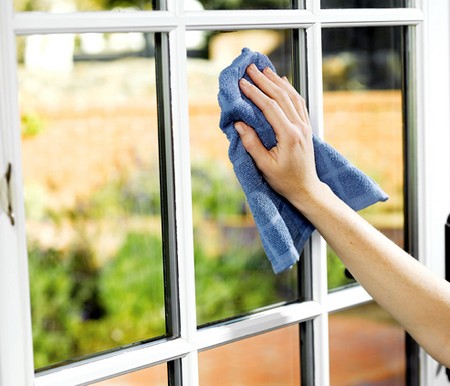Best Way to Clean Your House and Create an Allergy-Free Environment
Run your finger along a dusty surface in your home and the light gray powder on your fingertip will consist mainly of dead skin scales. These are shed from the human body as the skin continually renews itself. Along with skin scales, dust also contains fibres, particles of pollution, pollen, animal dander (skin scales and saliva), and microorganisms, such as mould spores, bacteria, and, of course, the ubiquitous house-dust mite with its allergenic fecal droppings.
Because dust is composed mainly of skin scales (the dust mite’s favourite food) it tends to accumulate in the most heavily used parts of the home, especially in beds, carpets, and furniture upholstered in fabric. These places also trap humidity and warmth, providing the ideal breeding environment for these tiny creatures.
Dust is, therefore, a potent source of allergens, especially of mite allergens, but also, to a lesser extent, of pollen, mould, and animal allergens. For those individuals who are sensitive to mite allergen, a dusty home is likely to be a significant factor in their allergic condition.
While it is likely that the stronger the sensitivity to mite allergen the more effective dust-avoidance and mite-elimination measures are likely to be, dust-mite allergen is not the only cause of allergic symptoms. Therefore, it is important to consult your doctor before buying products aimed specifically at reducing dust-mite allergen – for example, HEPA filter vacuum cleaners or anti-mite barrier covers for beds and bed linen.
The amount of effort you need to put into removing dust from your home depends on the severity of the allergic symptoms you experience. Being realistic; however most of us have only limited time to spend on cleaning, so it is best to concentrate your efforts on the rooms most used by the allergy sufferer In general, the bedroom is the most important room to keep free of dust mites and dust.
Reducing clutter
One of the most important allergy-reducing steps you can take is to rid your home of clutter. The simple truth is that clutter collects dust, so resolve to stop giving space to all those objects, curios, or knick-knacks you do not truly cherish. Take your time and go through your home, room by room. Aim to keep surfaces clear of clutter so that you can easily wipe away the dust that does settle there. Those objects you decide to keep can be placed in display cabinets – even books can be kept on glass-fronted shelves. Rid your home of unwanted larger items, too, such as that easy chair you have never really liked or those cushions on the sofa you always push aside before sitting down.
Dusting
Avoid using a feather duster Rather than removing dust, all it does is flick it up into the air where it can be breathed in or cause problems by settling on the eyes or on the mucous membranes of the nose. Dust can remain airborne for several hours before settling down once again, all the time posing problems for those sensitive to house-dust allergen. Instead, it is better to damp-dust using a slightly damp, but not wet, cloth. Dust-attracting (electrostatic) cloths are also available, or you may prefer to clean surfaces using a vacuum cleaner fitted with a suitable attachment.
Categories
Advertisements
Recent Articles
 How to Understand Bed Sizes – A Small Guide
How to Understand Bed Sizes – A Small Guide How to Select Some Must Have Kitchen Accessories
How to Select Some Must Have Kitchen Accessories Best Way to Change a Car Tire
Best Way to Change a Car Tire Best Way to Write an Affirmation
Best Way to Write an Affirmation Best Way to Take Charge of Your Financial Life
Best Way to Take Charge of Your Financial Life Best Way to Survive a Party When You Don’t Know Anyone
Best Way to Survive a Party When You Don’t Know Anyone Best Way to Stop Self Sabotaging Yourself
Best Way to Stop Self Sabotaging Yourself Best Way to Start Journal Writing
Best Way to Start Journal Writing Best Way to Speak with a Powerful Voice
Best Way to Speak with a Powerful Voice Best Way to Simplify Your Life
Best Way to Simplify Your Life Best Way to Respond to a Put-Down
Best Way to Respond to a Put-Down Best Way to Reduce Acne Breakouts
Best Way to Reduce Acne Breakouts Best Way to Recover from Dining Disasters
Best Way to Recover from Dining Disasters Best Way to Quit Your Job Gracefully
Best Way to Quit Your Job Gracefully Best Way to Make Your Own Website
Best Way to Make Your Own Website



Leave a Reply